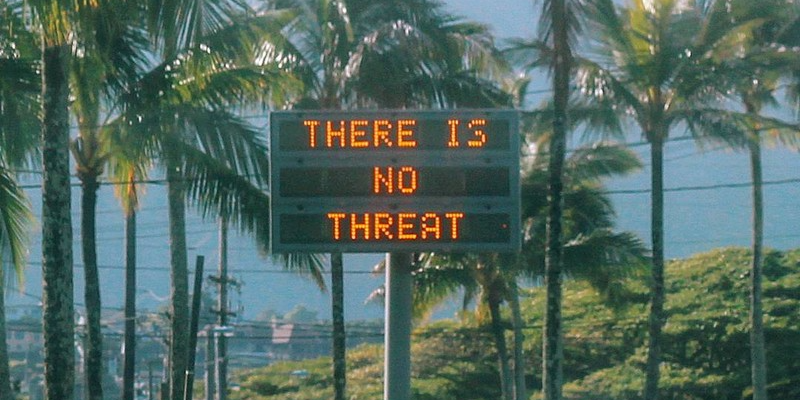- The Hawaii employee responsible for transmitting an emergency alert falsely warning of a ballistic missile earlier in January has been fired.
- The employee believed the threat was real, and had made the same mistake twice before, state officials said Tuesday.
- The head of the Hawaii Emergency Management Agency has also resigned over the incident.
A Hawaii employee has been fired after sending an emergency alert earlier in January that falsely warned the entire state of an inbound ballistic missile, triggering 38 minutes of panic and chaos before a correction was sent, state officials said Tuesday.
The leader of the Hawaii Emergency Management Agency (HI-EMA), Vern Miyagi, also resigned over the incident on Tuesday, and another agency worker was suspended without pay.
The employee who sent the alert had believed the threat was real, federal investigators said in a preliminary report released Tuesday. That employee had also made the same mistake at least two times before, confusing a real event with a drill in a fire incident and a tsunami incident, state officials said.
The employee’s previous job performance had also concerned his colleagues and supervisors for years, retired Brig. Gen. Bruce Oliveira told reporters at a press conference. But the employee was “counseled” and given on-the-spot corrections by supervisors.
The employee has also refused to cooperate with the federal or state investigations, providing only a written statement.
The Federal Communications Commission said in a preliminary report released Tuesday that a shift supervisor at the emergency management agency played a recording over the phone to officers during what was meant to be a drill, but erroneously included the language "THIS IS NOT A DRILL."
The FCC's report contradicts the explanation given immediately after the incident by Hawaii Gov. David Ige, who said the employee had "pushed the wrong button" by accident during a shift changeover.
Here's the minute-by-minute breakdown of what happened, according to the FCC (all times local):
- 8:05 a.m.: The midnight shift supervisor at the Hawaii Emergency Management Agency began a surprise ballistic missile defense drill at a shift change.
- The supervisor pretended to be US Pacific Command, alerting the day shift warning officers of a threat by playing a recording over the phone.
- The recording began with the words "EXERCISE, EXERCISE, EXERCISE," as was the proper procedure, but the supervisor also erroneously included the words "THIS IS NOT A DRILL," causing the warning officer to believe it was a real emergency.
- 8:07 a.m.: The officer selected the template for a live alert from a drop-down menu, clicking "yes" in response to a prompt that said, "Are you sure that you want to send this Alert?"
- 8:08 a.m.: Another day shift warning officer received the false alert on a mobile device.
- 8:09 a.m.: HI-EMA notified the governor of the false alert, followed by the US Pacific Command and the Honolulu Police Department.
- 8:20 a.m.: HI-EMA posted the message "NO missile threat to Hawaii" on Facebook and Twitter.
- 8:24 a.m.: Hawaii's governor retweeted that notice.
- 8:31 a.m.: The supervisor at HI-EMA logged into the alert system and began creating a correction for the false alert.
- 8:45 a.m.: A correction alert was sent clarifying that there was no missile threat.
Between 8:07 a.m. and 8:45 a.m., however, people in Hawaii feared for their lives. They sought out shelter, sped down roads and highways to reach their families, searched the internet for missile survival advice, and contacted their loved ones to say goodbye.
The FCC said the incident was a result of "a combination of human error and inadequate safeguards," and the Hawaii Emergency Management Agency's lack of preparedness led to the 38-minute lapse before correcting the alert.
HI-EMA has halted ballistic missile defense drills temporarily and has already begun implementing new procedures to avoid a false alert situation, the FCC said. The agency is increasing the amount of supervision required for drills and alert transmissions, and has created a template to use for future corrections.

